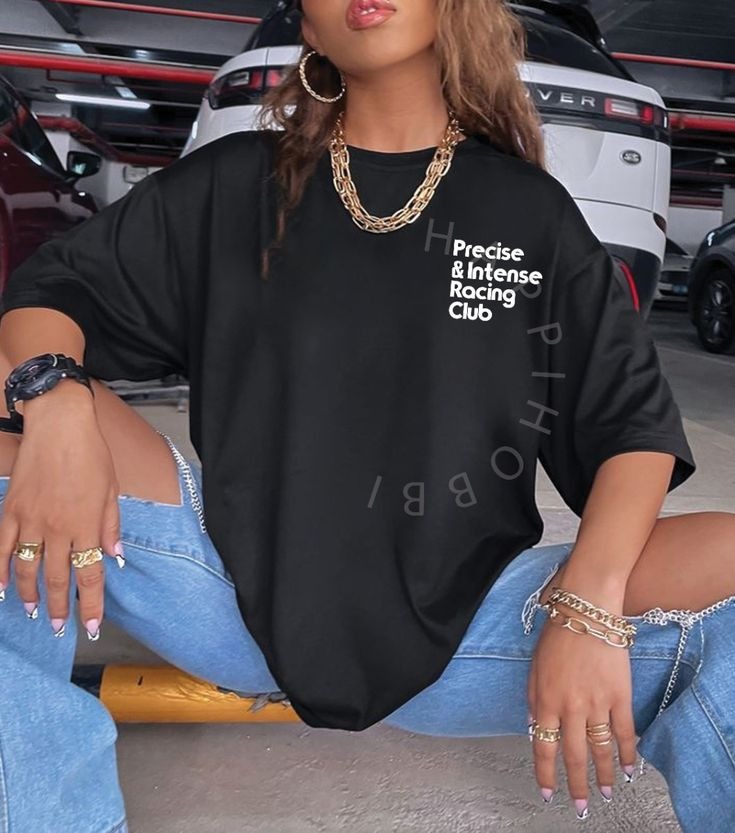Introduction
From its unassuming origins as a simple undergarment to its current reign as the ultimate ubiquitous wardrobe staple, the T-shirt’s journey has been nothing short of remarkable. This seemingly modest piece of apparel has woven itself into the fabric of cultures around the globe, transcending age, gender, and socioeconomic status. In this expansive exploration, we will trace the T-shirt’s evolution over more than a century, examine the science of its materials and construction, celebrate its role as a creative canvas, unpack the intricate dynamics of its global production, confront its environmental and social challenges, and survey the cutting-edge innovations poised to redefine what a T-shirt can be.
Origins in Comfort and Necessity
The T-shirt’s lineage can be traced back to the bulky union suits of the 1800s. Those one-piece undergarments—woven from wool or heavy cotton—were essential for warmth in an era before central heating. Yet their cumbersome fit and tendency to chafe led wearers, especially laborers and seafarers, to seek lighter alternatives. Splitting the union suit in two produced a separate top and bottom, giving workers better mobility and breathability.
By the early 1900s, the U.S. Navy officially adopted the short-sleeved, crew-neck cotton “undershirt” for sailors stationed in tropical climates. Its practicality on deck under the sun was immediately apparent—and though it remained technically an undergarment, photographs from World War I often depict sailors wearing these shirts as standalone attire. That quiet burst of popularity in the military soon spilled over into civilian life, as factories in the 1920s and ’30s began producing and marketing lightweight cotton shirts to men and women alike.
A Symbol of Rebellion and Youth Culture
The T-shirt’s transformation from hidden layer to fashion icon hinged on the silver screen. In the early 1950s, youthful icons challenged the status quo by discarding the jacket and tie in favor of a clean white tee. With James Dean’s brooding presence in “Rebel Without a Cause” and Marlon Brando’s raw charisma in “A Streetcar Named Desire,” the T-shirt became synonymous with nonconformity and effortless cool. It was a radical departure from the tailored, buttoned-up look of the previous decades.
That spirit of rebellion resonated beyond Hollywood. On the beaches of California, tee-wearing surfers embraced the casual freedom it afforded. In the music halls of the British Invasion, rock ’n’ roll bands adopted T-shirts as their uniform. Across Europe and Asia, countercultural movements—from Mods to punks—used printed tees as billboards for slogans, symbols, and subversive graphics. By the late twentieth century, it was impossible to separate the T-shirt from the idea of youth, protest, and self-expression.
Textile Science: From Seed to Shirt
At its heart, the T-shirt is a marvel of textile engineering, balancing comfort, durability, and visual appeal—often at astonishingly low cost.
Cotton Varieties and Alternatives
Cotton remains the dominant fiber in T-shirts thanks to its breathability, moisture absorption, and soft hand. But not all cotton is created equal.
-
Short-staple upland cotton offers affordability and broad availability, but can feel coarse and pill over time.
-
Long-staple varieties—like Pima and Egyptian cotton—produce smoother, stronger yarn with fewer loose fibers, enhancing both comfort and longevity.
-
Organic cotton, cultivated without synthetic pesticides or fertilizers, addresses concerns about soil health and farming communities, though yields tend to be lower and prices higher.
Beyond cotton, manufacturers are experimenting with alternative fibers. Bamboo-derived viscose offers a silky drape; linen, made from flax, brings natural texture and exceptional breathability; and blends incorporating recycled polyester or even soy protein fibers push toward more sustainable models.
Knit Structures and Fabric Weight
How yarn meets needle determines a T-shirt’s hand feel and performance.
-
Jersey knit is the industry standard, yielding a lightweight, smooth fabric with gentle horizontal stretch.
-
Interlock knit doubles the jersey structure, producing a plush, stable fabric that resists twisting and offers a cleaner surface for printing.
-
Slub knits incorporate irregular yarn thickness, giving tees a rustic, textured look prized in vintage-style garments.
Fabric weight, measured in grams per square meter (GSM), ranges from ultralight (under 120 GSM), through midweight (140–180 GSM), up to heavyweight (200+ GSM). The choice balances drape, opacity, warmth, and perceived quality.
Construction and Fit
A well-made T-shirt involves more than cutting fabric and stitching panels. Quality details—shoulder tape to prevent stretching, twin-needle stitching for durability, side seams for shape retention—elevate a garment from basic to enduring.
Fit categories continue to expand beyond “men’s” and “women’s.” Unisex cuts offer neutral proportions; gender-specific patterns account for different torso shapes; and inclusive brands now offer extended size ranges with nuanced grading. Meanwhile, contemporary trends favor boxy, cropped, and oversized silhouettes that challenge traditional expectations of how a T-shirt should fit.
The T-Shirt as Wearable Art
What truly distinguishes the T-shirt from other basics is its capacity as a blank canvas. Decoration techniques have evolved from simple stencils to sophisticated digital processes.
Screen printing remains king of high-volume runs, lending itself to bold solids and spot colors. Advances in eco-friendly inks and water-based processes reduce VOC emissions and wastewater hazards. For smaller runs and intricate imagery, digital direct-to-garment (DTG) printing offers unlimited color, photorealistic reproduction, and on-demand flexibility. Sublimation printing infuses dyes into polyester fibers, enabling all-over prints that will never crack or peel—though it is limited to synthetic fabrics.
Beyond printing, dyeing methods such as tie-dye, garment-dye, and pigment washes yield everything from riotous color explosions to soft, vintage patinas. Embellishments—embroidered logos, appliqués, sequins, patches—add texture and depth. Laser engraving can etch intricate patterns directly into the fabric, and laser-cut perforations create both aesthetic and ventilated effects.
As social media amplifies individuality, custom and micro-batch producers leverage heat-press vinyl, screen printing co-ops, and print-on-demand platforms to turn personal designs into reality with no minimum order quantity. Platforms like Printful, Teespring, and Redbubble empower artists to monetize their creativity worldwide.
The T-Shirt’s Role in Culture, Commerce, and Identity
Few garments convey meaning as efficiently as a printed T-shirt. It can declare political beliefs, commemorate events, celebrate fandoms, and foster team unity. A well-designed tee sparks conversation—whether advertising a favorite band, endorsing a cause, or simply sharing a witty quip.
Brands exploit that communicative power, too. Corporate logo tees serve as walking billboards, while streetwear labels engineer hype through limited drops, celebrity collaborations, and cryptic social media teasers. Those tactics transform a simple T-shirt into a collectible, resold at significant markups on secondary markets.
At the grassroots level, matching T-shirts for family reunions, bachelor and bachelorette parties, charity runs, and company retreats have become essential. They unify groups, generate social media moments, and become cherished keepsakes.
Global Supply Chains: Triumphs and Troubling Realities
The modern T-shirt typically traverses multiple continents before landing in a retail bin or e-commerce warehouse. Cotton may be grown in India, spun into yarn in China, knit into fabric in Turkey, sewn into shirts in Bangladesh, printed in Vietnam, and finally shipped to consumers worldwide.
This complexity enables affordability but also obscures labor practices and environmental impacts. Cotton cultivation consumes up to 20,000 liters of water per kilogram of fiber and relies heavily on pesticides in conventional systems. Dye houses discharge untreated effluent in many regions, poisoning local waterways. Garment workers—often women—may endure long hours for wages that barely meet living-wage standards.
Brand initiatives toward transparency—including publishing factory lists, obtaining Fair Trade and GOTS certifications, and piloting blockchain traceability—offer hope. Ethical manufacturing hubs and on-shoring movements in select markets aim to balance cost with accountability, but the industry still has far to go to ensure that every T-shirt reflects fair labor and ecological stewardship.
Environmental Impact and the Quest for Circularity
While the T-shirt’s simple form belies a heavy ecological footprint, innovators are hard at work closing the loop. Chemical recycling plants now break polyester down to monomers, enabling production of virgin-quality fibers from recycled bottles and garments. Mechanical recycling of cotton involves shredding old tees and spinning the short fibers into new yarn—often blended with virgin fiber to regain strength.
Waterless dyeing technologies—using supercritical CO₂ or foam dye processes—slash water use and eliminate dye-bath discharge. Closed-loop facilities capture and treat all process water. Brands are experimenting with regenerative cotton, which uses cover crops, compost, and crop rotation to rebuild soil carbon and biodiversity.
On the consumer side, rental subscriptions and garment take-back programs encourage longer lifespans. Repair cafes and DIY tutorials empower wearers to mend holes, re-hem stretched collars, and refresh faded colors. Digital platforms facilitate peer-to-peer resale and swapping, treating unwanted tees as resources rather than waste.
Tomorrow’s T-Shirt: High Tech, High Touch
The next frontier of T-shirt innovation blends fabric and function in unprecedented ways. Smart textiles embed washable sensors and conductive threads to monitor heart rate, track posture, or detect environmental pollutants. Phase-change materials can actively regulate temperature by absorbing or releasing heat. Anti-microbial finishes crafted from naturally derived silver nanoparticles or chitosan aim to reduce odor and minimize laundering.
Advances in 3D knitting and circular looms promise zero-waste production, knitting entire garments—including collars and sleeves—in a single seamless process. AI-driven design tools can optimize patterns for fit, drape, and fiber efficiency, while 3D body scanning at retail kiosks ensures truly personalized sizing. Localized on-demand manufacturing centers equipped with digital cutters and automated sewing robots could slash lead times and inventory risk, bringing production closer to point of sale.
Meanwhile, the rise of virtual reality and the metaverse has opened a new avenue for the T-shirt. Brands are releasing limited-edition digital tees for avatars, minted as NFTs to guarantee authenticity and scarcity. Those digital collectibles may unlock real-world perks—access to exclusive events or early drops—bridging physical and virtual identities.
The Human Story Woven into Every Stitch
Ultimately, the T-shirt’s allure lies in its fusion of the personal and the global. The shirt you pull on this morning connects you to farmers in far-off fields, to artisans at sewing tables, to designers sketching in studios, and to your own desire for comfort, style, and self-expression. It can carry a message of hope, a declaration of allegiance, or simply a splash of color that brightens an ordinary day.
As we continue to navigate the tension between mass production and mindful consumption, between technological possibility and ecological necessity, the T-shirt remains an enduring symbol of our collective story. In that thin layer of jersey lie threads of innovation, culture, commerce, and conscience. The next time you don a T-shirt—whether pristine or worn, plain or printed—take a moment to appreciate the complex journey woven into every fiber, and consider how your choices today can shape the future of this timeless garment.

